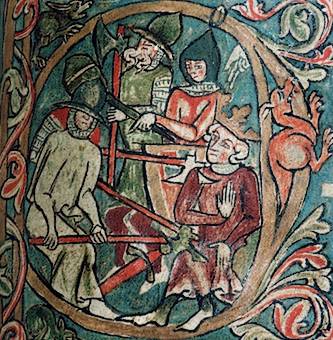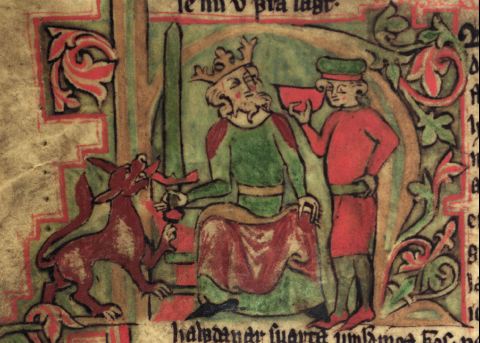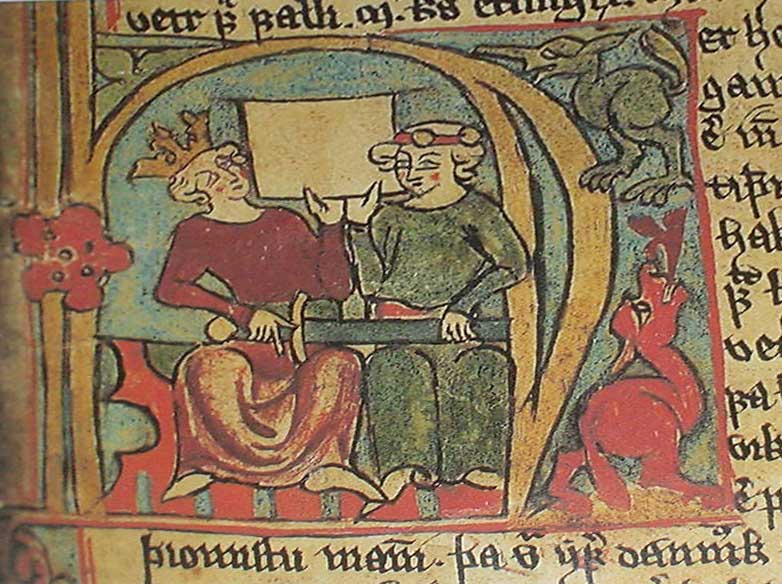


 |
 |
 |
Peer review assignment
Congratulations! You have just been selected as reviewer for the prestigious Vision Institute for Knowledge, Insight and Novel, Groundbreaking Scholarship, which hands out research grants on Norse history. Your assignment is to act as reviewer of three proposals the Institute has received.
Due: 17 April 2012; if you are printing out a hard copy, bring it to class; electronic copies (to both your peers & your instructor) due no later than 10:00am.
Format: you may either comment on your peers' work electronically (e.g. using Word's Comment function & appending an overview evaluation) or print it out, commenting in the margins & attaching a sheet with your overall assessment (double-spaced , 12-pt font , at least 1” margins; please include the standard identifying information: name, date, class, etc.). There are no length guidelines: bear in mind that the main purpose of your review is to be helpful to your classmates in revising their papers – give them the extent of comments you'd find useful yourself.
Rationale for this exercise
In this exercise, you will serve as the friendly reviewer for three of your classmates' final essay drafts, while they review your own draft. Your peers are among the most powerful & underutilised resources available to you. By this point in the course, you all should know enough about the Viking Age to be able to assess someone else's draft with a critical eye; you've also received comments from your instructor that should give you a sense of the kinds of things I'm looking for. Peer reviewers can be of immense help to an author by pointing out loopholes in his or her argumentation (e.g. missing or poor evidence, incomplete or faulty analysis) and presentation (e.g. awkward phrasing, unclear exposition), by suggesting ways of fixing such loopholes, and by putting their own expertise at the service of the author. An ideal reviewer will pull no punches – your peers are counting on you to point out the weaknesses in their work so that they may improve it – but will couch his or her ruthlessness in the most constructive & friendly terms possible. You should write your criticisms of your peers' work in the same tone you'd like to hear their views of your own draft.
Reviewers themselves also stand to gain a lot from the process. For one thing, you get to read & comment on new scholarship-in-progress. Perhaps even more importantly, while we may all be highly individual in our correct insights & original ideas, we tend to be pretty similar when it comes to the ways in which we get things wrong; and it is much, much easier to spot errors & to see ways of fixing them in the drafts of others than it is in our own. You have the opportunity to use the work you are reviewing as a kind of mirror for identifying lapses of logic, problems of evidence, or writing glitches in your own draft.
Funding
You have been given discretion with $150 of VIKINGS funds. Award $100 to the best proposal you review and $50 to the second best proposal. (Unfortunately, not all projects can be funded; the Institute needs your help in identifying the most promising prospects.)
Procedure
Please comment on the following aspects of your peers' drafts. Your comments may address the points below in sequence, but you do not need to format your commentary in accordance with the structure of these bullet points; what's important is to address the subject matter of each.
Problems?
Please be sure to contact Oren if you run into any difficulties.
Good luck!
return to HIS 3200 syllabus
Oren Falk, Associate Professor
Department of History, Cornell University
Page last updated on: 10 April, 2012